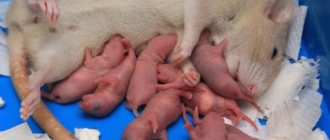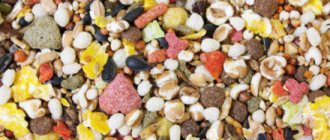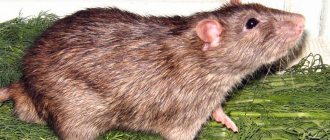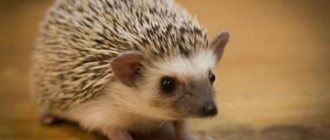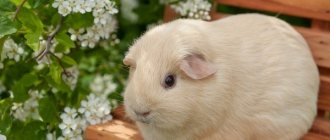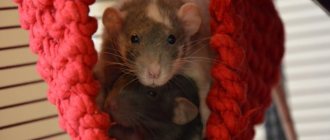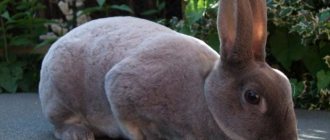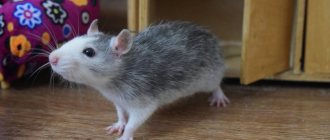Oddly enough, among all types of decorative rodents, domestic rats are becoming increasingly popular. These animals are very friendly, easy to care for, do not require much space to keep, and can always cheer you up. Moreover, it is believed that rats are very intelligent creatures, smart, cunning, and have a good memory.
There are a huge variety of rat breeds, which differ in size and type of fur. The main ones are presented in the photo below.
Varieties
There are several popular types and breeds of decorative rats:
- standard - a rat with smooth, glossy fur;
- Dambo - ears are larger than the others, rounded, low-set;
- satin - long wool, silky and shiny in appearance;
- sphinx - hair is completely absent;
- tailless - no tail;
- rex - much denser coat;
- double rex - hairless in some places, with rough fur in others;
- albino - a white decorative rat with red eyes.
Harm to humans
Black and gray rats are equally dangerous to humans. Rodents spread terrible diseases, carry pathogens, worm eggs, and fleas. In the previous century, the black rat was the main carrier of plague.
They spoil and destroy food supplies. They get into warehouses, barns, storage rooms, cellars. In the spring, an invasion of black rats is dangerous due to gnawing on the bark of young trees and the death of plants. In the fall, the harvest is spoiled.
In the house, pests gnaw on walls, furniture, decorative items, and wall insulation. Rodents even grind what is of no nutritional value to them in order to stop the growth of teeth.
Content Rules
Keeping decorative rats does not require any special wisdom. The main thing to do is to purchase a spacious cage.
Animals love to move, so they need space. The cage must be equipped:
- filler - the ideal option would be dry wood (it absorbs odors and liquids well);
- a house - a rat sometimes needs privacy;
- tunnels and ladders - pets will definitely want to play and run around;
- drinking bowl with fresh and clean water;
- a feeder well fixed to the rods;
- mineral stone so that animals can chew it.
It is strictly forbidden to use litter made from coniferous trees for decorative rats. It can cause serious illness and even death.
You can complement the design of the cage with various toys and treats for rodents.
Lifestyle
Habitat of the black rat
The black rat builds nests in old hollows and trees. For construction he uses twigs, sticks, and moss. The rodent's house looks more like a magpie's nest. Often rodents simply occupy a ready-made nest, eating the legal inhabitants.
Black rats spend the day in the nest, hiding from the sun's rays. They intensify their activity after dark. They behave carefully. Because there are plenty of natural enemies - dogs, cats, hedgehogs, birds, wolves, foxes.
The black rat part can be seen on the tree. The rodent climbs well on horizontal and vertical surfaces. If necessary, climbs to the very top.
On a note!
In the old days they lived in a man's house under a thatched roof. Modern rodents prefer attics. They share territory with pasyuki. The first live above, the second below under the floor.
The average lifespan of an animal in the wild is 1 year. As a pet it lives up to 4 years.
Feeding
Do you want to know what to feed your kitty rat? Everything is quite simple, especially since pets are unpretentious in food.
Note!
Domestic hedgehog - a review of the best hedgehog breeds to keep, all the features of the pet from feeding to living conditions! + photos and videos
Domestic goat - an overview of the features of keeping goats, how to care for them and what to feed them, as well as diseases, treatment and prevention of diseases in the review!
Sheep - learn everything about keeping sheep, features of living conditions, diet and the main characteristics of sheep as a pet!
The rat menu should consist of:
Grain. Experienced owners prepare and select the ingredients for feeding themselves. A ready-made mixture of grains can be purchased at almost any pet store.
Vegetables, herbs and fruits. In small quantities. There is no need for any special products here; common vegetables and fruits are quite suitable for rats. Herbs such as dill and parsley will also suit their taste.
Protein food. A little meat, cottage cheese or cheese. These products are not for your daily diet.
List of foods that should not be given to rodents: sweets, legumes, cabbage, sausage, soda and chips. Make sure your pet does not eat indoor plants, as this may be life-threatening.
Location
Where the black rat lives is a very interesting question. The favorite habitat for the rodent is sea vessels. Rats live side by side with humans and eat identical food. They spread around the globe thanks to water transport.
The black rat is less inventive than its relative the Pasyuk. Content with little. Settles near reservoirs and rivers. But it is less attached to water than the gray one. Does not build nests in the ground, avoids water, but if necessary, swims quite a long distance. It does not dive because fish, fry, and amphibians are of little interest to it.
Willingly settles in the forest, fields, and edges. The lifestyle is more reminiscent of voles. In urban areas, it prefers sewers, abandoned buildings, garages, garbage cans, and entrances. Can live in a person’s house, occupying the upper floors or attic.
Photos of decorative rats
Difference in appearance: how is a black rat different from a gray one?
Outwardly, it is not difficult to distinguish a black rat from a gray one, especially if you look at these animals (or at their photographs) at the same time:
- The black rat is smaller and somewhat slimmer, it has a more elongated muzzle;
- The fur color of representatives of this species is darker, corresponding to the name. Although, as we will see later, animals from some populations may have completely different colors;
- The black rat has larger ears - together with a longer nose, they make it look like a large mouse.
The black rat also has unique anatomical features that only biologists know about. For example, the parietal ridges of the skull are arched, while in the Pasyuk they are more even. In living animals of both species this is not noticeable - such details are revealed only when studying the skulls.
It may seem that the main difference between a black and a gray rat is the color of its fur. This assumption is true, but not always. The fact is that the species has several color races, and some of them are even lighter than Pasyuks.
So, for example, in Europe, two races are approximately equally common, one of which has a typical black-brown fur color, darker than that of pasyuks, and the other is almost brown-haired with a white belly, similar in color to gophers. That is, it would be hard to call animals of the second race black, even though they are normal representatives of the species. The species name for them is nothing more than a term to identify the animal.
For example, the photo below shows an individual of the light morph:
The black rat is smaller in size than the Pasyuk. The largest representatives of this species reach a length of 22 cm, their tail is about 29 cm long, and their body weight reaches 300 grams. For comparison: for pasyuks, 300-320 grams for an adult animal is the norm, and individual males can eat up to 400 grams.
On a note
By the way, another important difference between a black rat is that its tail is always longer than its body. In gray, the length of the tail is always less than the length of the body.
Today a very interesting fact has been established: under the name “black rat” there are actually four look-alike species hidden. Outwardly, they are no different from each other, have no anatomical differences, and lead the same lifestyle. But their offspring, when crossed, are less fertile and viable than those of two representatives of the same species. Moreover, due to the fact that such descendants quickly degenerate, and rats from “pure lines” survive, the twin species themselves are constantly separated genetically, although they remain outwardly identical.
However, some scientists do not fully agree with the identification of four separate species of black rats. They only talk about karyotypic forms.
As a result, one of the interesting phenomena with which nature is so rich takes place: the ranges of such twin species can intersect geographically, and in the same territory, outwardly indistinguishable individuals of black rats can live side by side, without producing viable offspring. At the same time, representatives of different color races of the same species, clearly distinguishable from each other (black and yellow), easily interbreed, and their offspring retain fertility and vitality.
This is interesting
The phenomenon of sibling species is widespread in nature. It became known to researchers relatively recently, after the introduction of genetic research methods into practice. Before that, it was impossible to differentiate representatives of such species from each other, since they have no external or anatomical differences. The methods of genetic research made it possible to unambiguously find differences in the genotype sufficient to distinguish animals into different species.
For example, after conducting relevant research, it turned out that the most dangerous species of malaria mosquitoes, Anopheles gambiae, is, in fact, a group of 16 separate species, completely identical in appearance. But black rats turned out to be even more unique: their twin species differ not only in individual genes, but even in the number of chromosomes.
Differences in nutrition
In the warm spring-summer period in the natural environment, the mouse prefers to eat plant seeds and cereals. Field animals feast on wheat, buckwheat, and oats. Rodents living in forests prefer hazel nuts, acorns, and can even feed on small insects. Near reservoirs they find roots and stems of plants, berries, and larvae.
With the arrival of autumn cold weather, the mouse begins to actively look for warm places to eat, moving closer to humans. Penetrating into a home, it becomes omnivorous. In addition to any edible food, she will not disdain such products as soap or candles. Animals cause particular harm to stocks of vegetables stored in the basement, to cereals in bags, they can chew wires, and inhabit shelves with linen and clothes.
Rats bring even more trouble. These rodents are capable of causing damage to anything in their path, including wires and structures. Everything that humans eat suits them perfectly. Under natural conditions, rats need food high in protein, feeding on fish, amphibians, and insectivores. By nature they are predators, they destroy bird nests, and can eat small rodents, including mice.
At home, a large rodent eats any food products and waste, and does not disdain feed intended for livestock and poultry. The rat does not store supplies, but without food it dies quite quickly, after 3–4 days. Her diet must contain water or food containing a lot of moisture. Without receiving it, the rats die within a few days.
Read how to properly bathe a rat at home.
General characteristics
Rodents belong to the class of mammals and in nature can live in the most unexpected places. Some live underground, not seeing sunlight, others are found in dry grass or trees. There are species adapted to exist in water or even in the desert. Some rodents may be active only during the day or exclusively at night, or lead a mixed lifestyle. Some species of these animals fall into deep winter hibernation.
The animals received the name of their order due to the special structure of their jaws. Rodents do not have fangs, but they have 2 pairs of incisors, which do not have roots and grow throughout their lives. The teeth are very sharp, but hard only on the outside. This feature allows them to sharpen themselves as they are constantly in use. A powerful muscular system allows animals to chew and gnaw food without contact of the incisors with each other.
Representatives of the rodent order can be of very different sizes. The mouse mouse, for example, has a body length of only 5 cm, while the capybara can grow up to 130 cm with a body weight of about 60 kg. Due to this difference in weight, the structures of their bodies are slightly different. Animals have a variety of coats: in some it is thick and short, in others it is sparse, in the form of bristles or needles. The color can be one color or several shades.
In nature, these animals are practically omnivores, but they prefer various seeds, fruits, roots and even small invertebrate animals. Water is necessary for the life processes of rodents. However, some species, accustomed to an arid climate, have learned to be content with the liquid obtained from food.
These small animals are very prolific. Some species are ready to breed at the age of 3 months. They are capable of having offspring up to 14 times a year; in the litter of some varieties there can be up to 22 cubs. The reproduction of domesticated rodents can and should be controlled.
As pets, they are very clean, easy to keep and transport. Large individuals can eventually follow simple commands and respond to their name. The lifespan of rodents varies from 1.5 years for small animals to 7 years for larger animals.
Habitat
Black rat: resident of the city and field.
Rats of this species are found in Europe, Asia, Africa, America and Australia. In Asia, where a temperate climate prevails, black rats are rare, since this area is the natural habitat of the gray rat.
But the climate of Australia turned out to be especially favorable for the black rat, while the pasyuk did not take root in this area.
On the territory of Russia, the black rat is found in the European part of the country from Arkhangelsk to the Caucasus. The rodent lives:
- in the Far East;
- Sakhalin;
- Kamchatka;
- Shikotana;
- Commander Islands;
- in Ussuriysk;
- Komsomolsk-on-Amur;
- Khabarovsk;
- Blagoveshchensk.
You can meet the gray rat Pasyuk, with whom the main character is so often compared, here.
Diet
A black rat can hardly be called a predator. The animal mainly feeds on food of plant origin:
- grain;
- seeds;
- vegetables;
- fruits.
The proportion of protein in a rodent's diet is very small. Only occasionally does the rat diet include:
- beetles;
- worms;
- bird eggs.
The animal is not known for its gluttony - during the day it consumes:
- 15 g food;
- 15 ml water.
But starvation is practically unacceptable for a rat. The animal can live without food for a maximum of 2 weeks, and without water (or if there is a lack of it) - only a week.
Structure and appearance
In the wild, black rats hunt at night. Therefore, the body structure and appearance of animals are maximally subordinated to the main goal - to survive in any conditions. Rodents have incredibly strong, resilient bodies. They can adapt to changes in their environment.
Domesticated rodents quickly adapt to new conditions and adjust their biorhythms to the regime of their owners. There are several varieties of black rats.
Breed names often duplicate feline or canine species. Domestic animals can differ not only in fur color, but also in body type, eye color, weight, and life expectancy.
The size of dark-colored domestic rodents is much smaller than their gray counterparts. A distinctive feature of black rats is that the tail length (29–30 cm) exceeds the body dimensions (20–22 cm). The weight of large dark-colored individuals sometimes reaches 300 g.
The large black rat's round ears give it the appearance of a large mouse. These smart and curious animals with elongated muzzles have a good memory and cannot be offended.
Pets' eyes can be multi-colored, but most often they are dark. A barely visible tassel at the tip of the tail is the only decoration of these beautiful animals.
Black rodents are reliably protected from temperature fluctuations by a warm coat, which consists of top pile and undercoat. The color intensity of the fur depends on the habitat of the animal. Among southerners, the dark color is significantly diluted with gray shades, while northerners have black fur with a greenish tint.
Where do the animals come from?
Fossil remains discovered by archaeologists indicate that the original habitats of black rodents were the Mediterranean and Middle Eastern territories. The animals managed to spread throughout the world thanks to their “love” for sea travel - they penetrated into remote territories from ships. In ancient times, black rodents were already found on almost all continents of the globe. The exploration of Russian lands by dark animals dates back to the beginning of the 17th century.
Subspecies
The black rodent family includes several species:
- Asian;
- oceanic;
- Mauritian;
- Ceylonese
They differ mainly in distribution. If individuals of the Asian subspecies live everywhere on the planet, then Ceylon ones are found exclusively on the island of Sri Lanka.
Baby rats
Newborn black rat cubs are characterized by the following:
- complete absence of fur;
- blindness;
- deafness;
- underdevelopment of the limbs.
With all this, kids have an excellent appetite. Every day, the pups noticeably change physically:
- after a week of birth, they start to have fluff;
- after 2 weeks they begin to see and hear;
- after 3 weeks, their skeleton and limbs are fully formed, after which the babies crawl out of the nest.
Month-old baby rats are already absolutely independent - they eat “adult” food, etc. Parents kick their offspring out of their nest, and the grown-up individuals begin an independent life, becoming full-fledged members of the rat colony to which their parents belong. In young females, puberty is completed by six months, after which they are ready to have their own offspring.
Reproduction and offspring
Black rats that have reached the age of 1.5 months are considered sexually mature. In warm climates, they actively reproduce, producing up to 40 new individuals per year. The female's pregnancy lasts 20–25 days. During this period, the animal’s diet increases significantly, and the weight of the expectant mother increases rapidly.
Not all black rats are suitable for home breeding. Therefore, before you buy 2 different-sex individuals and try to cross them, you should check the health status of the animals and ask the breeder or seller whether the animals are suitable for breeding.
If a rat or its parents are prone to cancer, such individuals should not be reproduced.
When choosing a pair of black rats for the purpose of producing offspring, you need to pay attention to:
- on the age of the animals (young individuals are always preferable);
- good mood of the animals;
- absence of diseases and predisposition to them.
After the birth of the pups, the female begins postpartum estrus, during which males should be isolated. If this is not done, another pregnancy will occur, which is harmful for both the mother and the newborn offspring.
Interesting! According to statistics, a pair of black rats can produce 3-5 thousand babies in 2 years. Once they reach one and a half months, the cubs are able to reproduce on their own.

